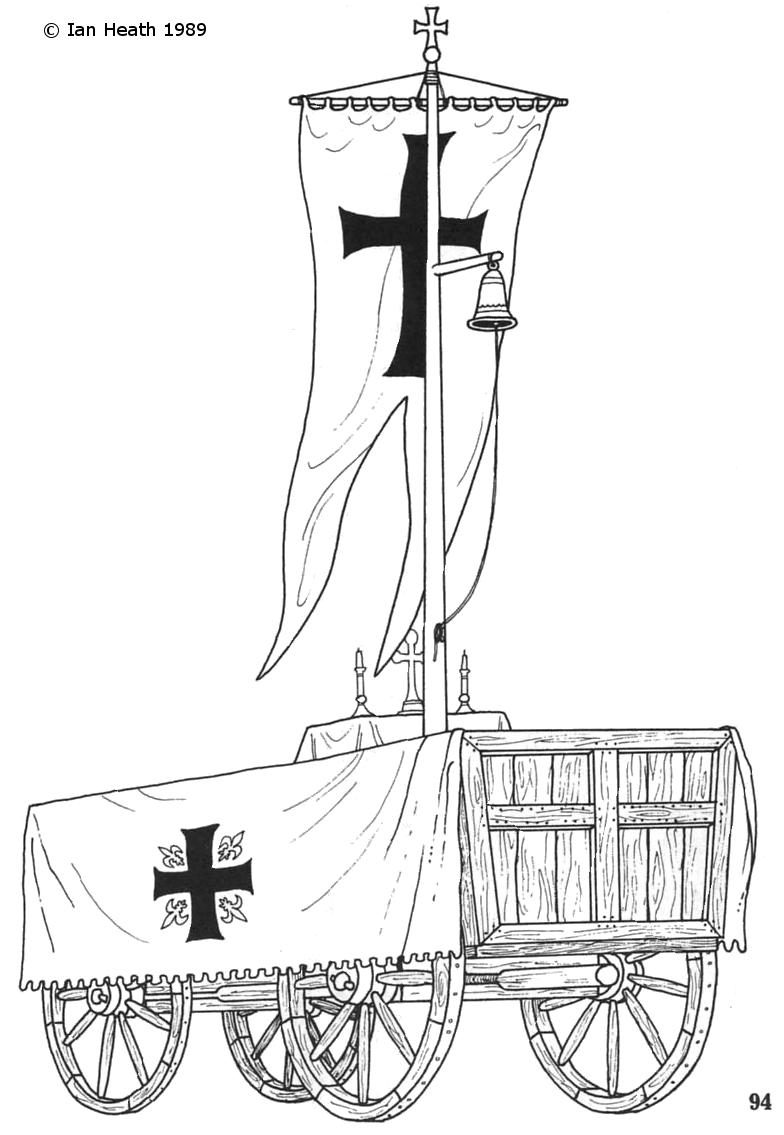
Register a SNAP EBT card with Amazon
CARROCCIO
An extract from Armies of Feudal Europe 1066-1300by Ian Heath



94. CARROCCIO
The carroccio was a characteristic feature of Italian warfare throughout this period and occasionally even appeared outside of Italy, such as at the Battle of the Standard in England, to which it gave its name, and in the Hungarian army at Semlin in 1167 and the German army at Bouvines in 1214. The first recorded appearance of the carroccio dates to 1038, when Archbishop Aribert introduced the custom in Milan. Though it lasted until the late-15th century, its heyday was during the 12th century.
The carroccio was a painted, ox-drawn wagon consisting of a rectangular wooden platform supporting an altar and a mast, from which the standard flew. The mast of Bologna's is recorded as being 12 feet tall, while Archbishop Aribert's is recorded to have been very tall 'like the mast of a ship', held upright by ropes and surmounted by a gold crucifix. Bologna's and Parma's carroccios carried red standards with white crosses, Florence's a parti-coloured standard of crimson over white, whilst those of other cities often displayed patron saints or crucifixion scenes. In Aribert's time Milan's was 'dazzlingly white' with 'in the centre a holy cross painted with our Saviour portrayed, his arms extended', but by the 1180s a portrait of the city's patron saint, Ambrose, had replaced this, to be replaced in turn in the late-13th century by a white banner with a red cross. The mast (or masts - some appear to have had two) and the wagon body were painted red, while the wagon itself was frequently covered in addition with scarlet hangings by the 13th century. It was usually pulled by up to 3 pairs of white oxen; in Milan these had white harness and housings with red crosses, while in Florence their housings were crimson.
Bologna's carroccio could hold 10 armed men, while the 'crew' of the Milanese carroccio consisted at first of a driver, a paid officer (usually a specially selected knight), a priest and 8 trumpeters, plus a guard of 8 mounted knights. Since the loss of the carroccio, and more particularly its standard, was considered a grievous dishonour and humiliation it was always accompanied by an elite guard unit in battle, principally composed of infantry; the Milanese carroccio at Legnano in 1176, for instance, was guarded by an infantry unit of 300 men, the 'Company of the Carroccio', supplemented by another unit of 900 called the 'Company of Death'. In the 13th century the Bolognese carroccio had an infantry guard of as many as 1,500 men.
The trumpeters appear to have transmitted simple commands across the battlefield, as did the bell hung from the mast. The Florentines went one step better, accompanying their carroccio with a smaller wagon which carried a larger bell than that shown here, called the 'Martinella'. Carroccios were likewise sometimes given names - that of Cremona, for example, was Christened 'Berta', and that of Parma 'Blancardo'.